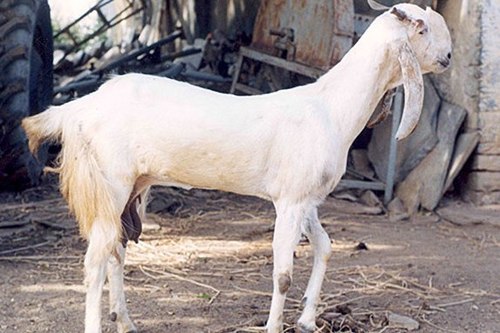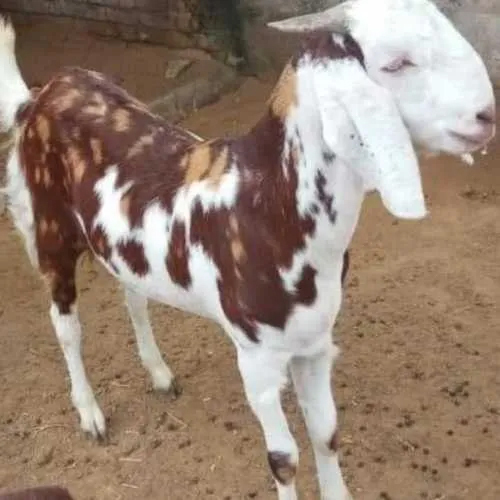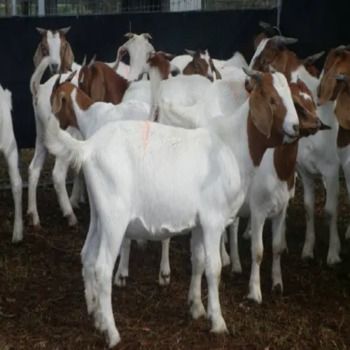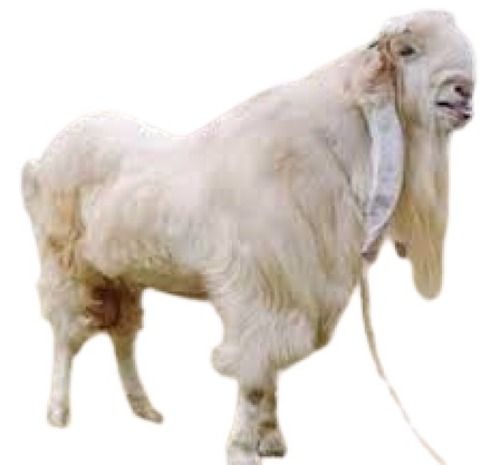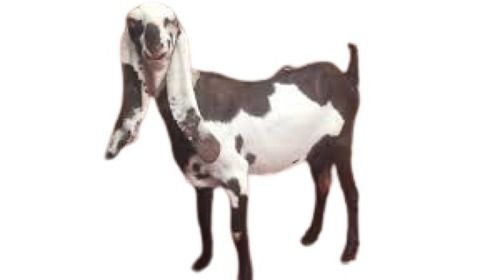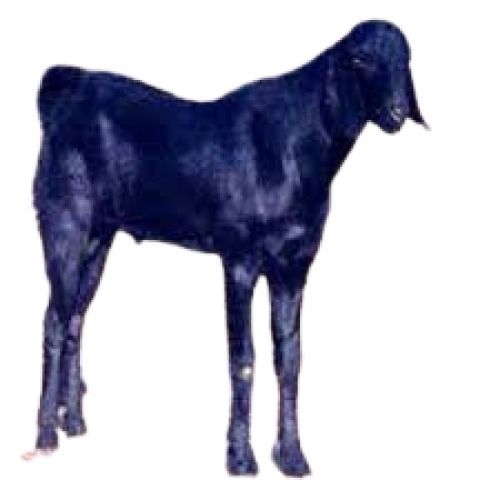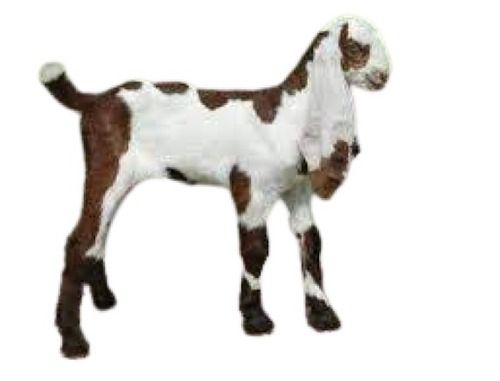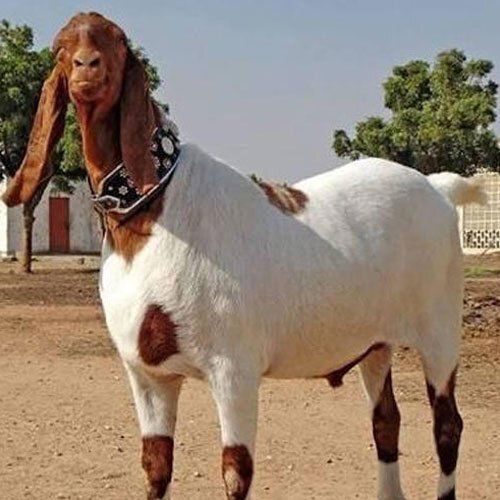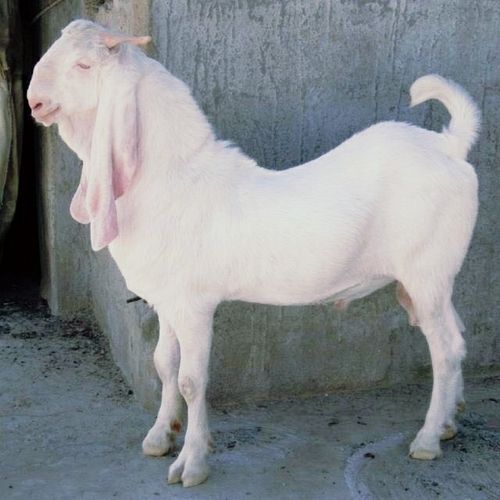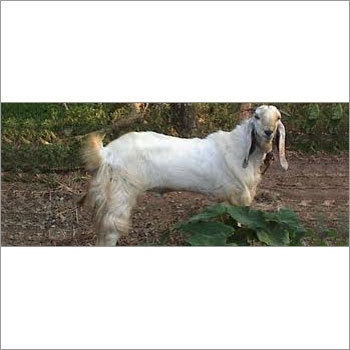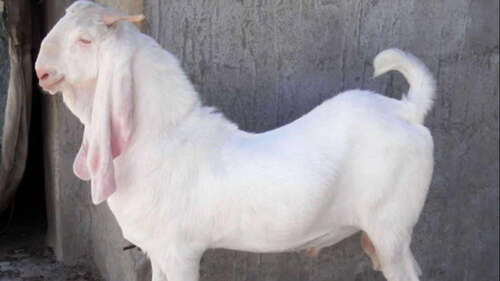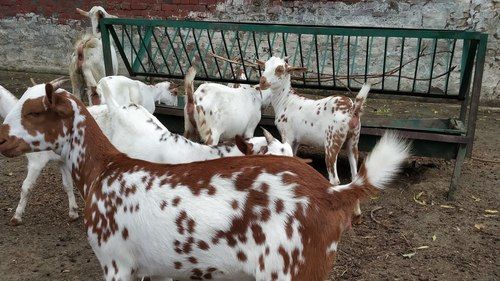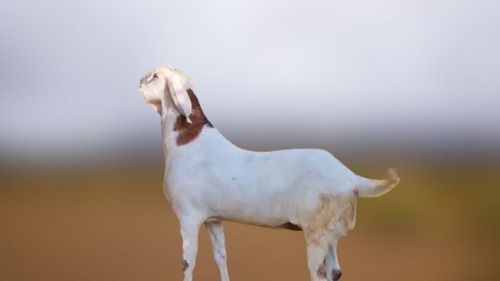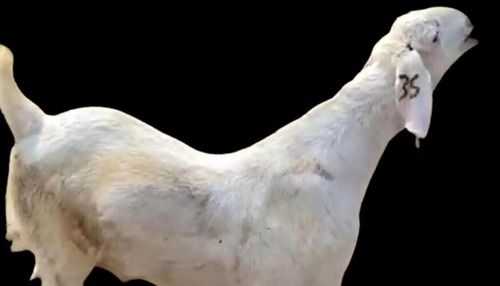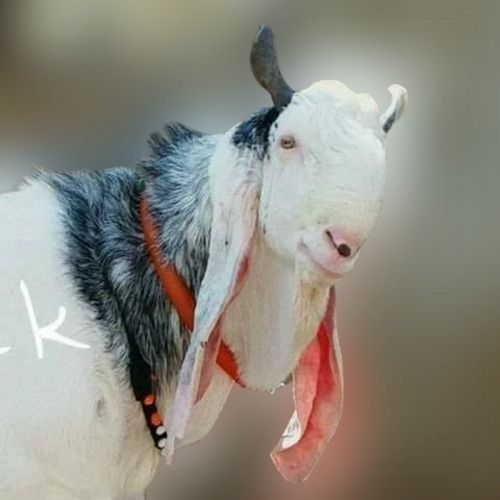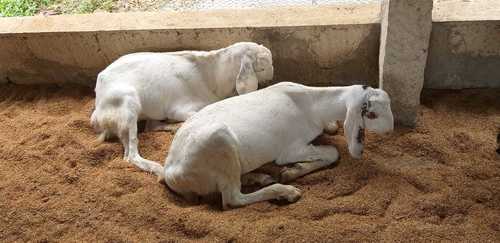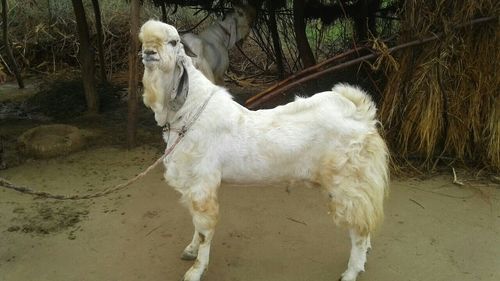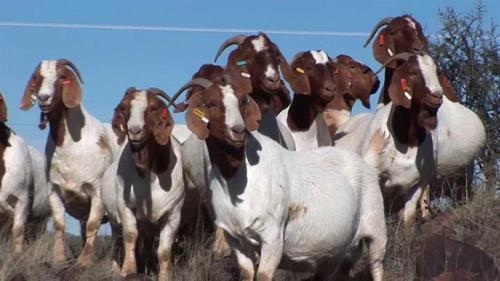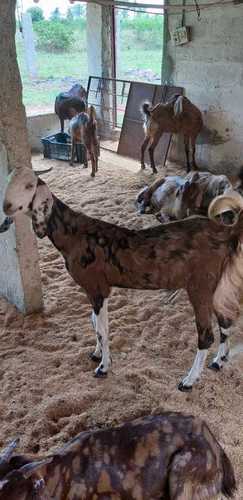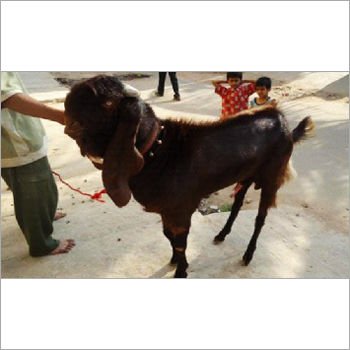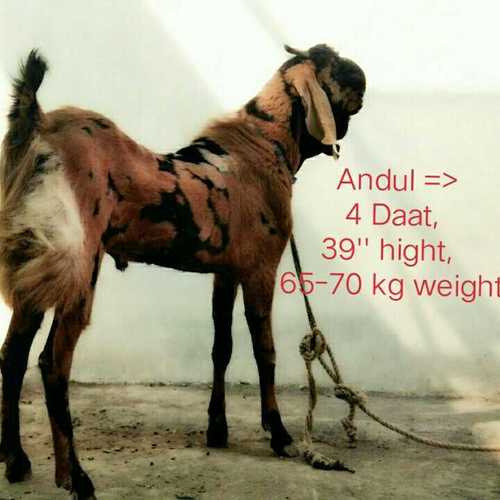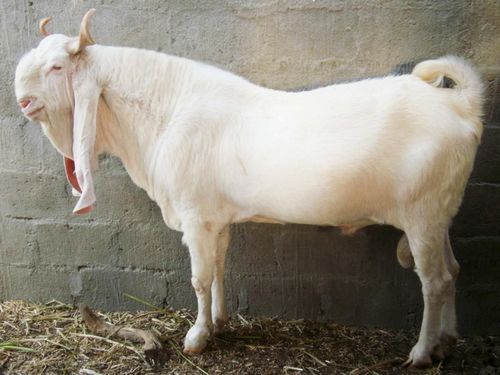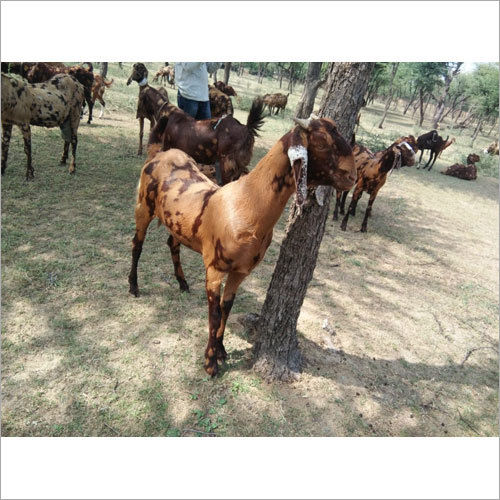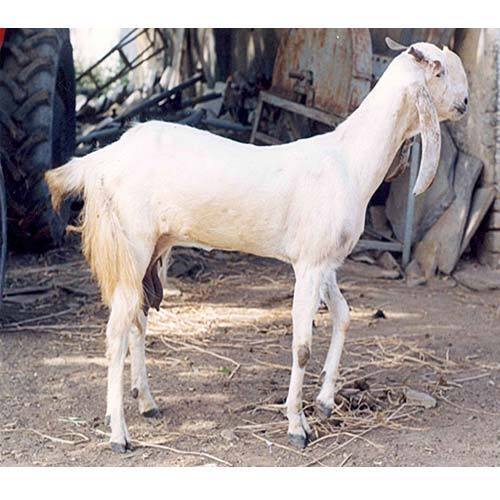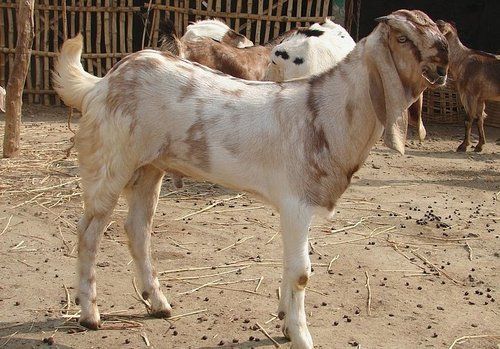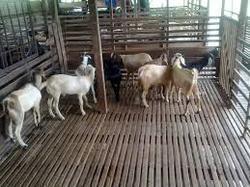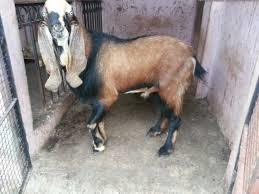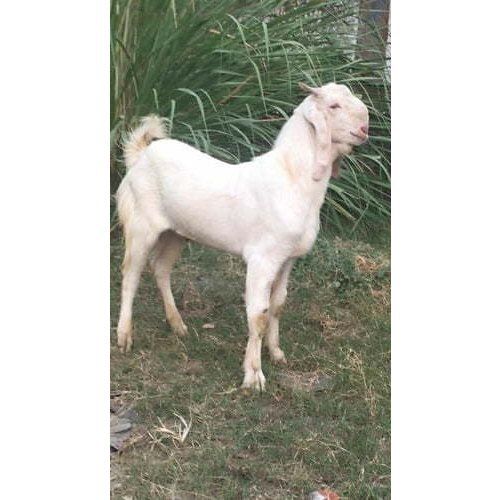- Tradeindia
- Livestock
- Jamunapari Goat
Jamunapari Goat
(46 products)Nutritious Jamunapari Goat
Price: 350 INR/Kilograms
MOQ5 Kilograms/Kilograms
UsageFor Home and Hotels
Product TypeGoat Meat
Cooked Processing TypeFried, Roasted
Different Available Gujri Female Goat
Price: 300 INR/Kilograms
MOQ100 Kilograms/Kilograms
ColorDifferent Available
Product TypeGoat
Commercial UsesLivestock
Boer Goat
Payment TermsTelegraphic Transfer (T/T), Paypal, Others, Western Union
Delivery Time1 Week
Sample PolicyContact us for information regarding our sample policy
Healthy White Live Jamunapari Goat Gender: Both
Price: 16055 INR/Piece
MOQ10 Piece/Pieces
Product TypeLive Jamunapari Goat
Weight12 Kilograms (kg)
ColorWhite
Male Jamunapari Goat For Farming
Price: 5000 INR/Unit
MOQ2500 Unit/Units
Product TypeJamunapari Goat
Commercial UsesMeat
ColorBrown And White
Jamunapari Goat
Product Description\015\012 While\015\012climbing our success ladder, it has become increasingly important\015\012for us to offer healthy and high quality breed of Jamunapari Goat.\015\012
White Live Jamunapari Goat For Farming Purpose
Product TypeWhite Live Jamunapari Goat
Commercial UsesFor Farming
ColorWhite
Commercial Goat Farming Services
Price: 5000 INR/Number
MOQ1 Number
FOB PortLucknow
Payment TermsCash on Delivery (COD), Delivery Point (DP), Cash Against Delivery (CAD), Days after Acceptance (DA), Cash in Advance (CID), Cheque, Cash Advance (CA)
Supply Ability1 Per Day
Nandinandan Breeds & Seeds India Private Limited
Lucknow
15 Kilogram and 10 Months Old 2 Feet Jamunapari Male Goat
Price: 28000 INR/Unit
MOQ10 Unit/Units
ColorWhite
Product TypeJamunapari Male Goat
Weight15 Kilograms (kg)
Mixed Barbari Goats
Price: 200 USD ($)/Unit
MOQ10 Unit/Units
Weight60 Kilograms (kg)
Colormixed
BreedBarbari goats
Prominent Roman Nose Large Folded Pendulous Ears Jamunapari Goat, White In Color Gender: Both
Price: 450 INR/Kilograms
MOQ30 Kilograms/Kilograms
Product TypeGoat
Weight30 Kilograms (kg)
ColorWhite
Top Rated Products
FAQs Related to Jamunapari Goat
White Jamunapari Goat Gender: Female
Weight35 - 40 Kilograms (kg)
ColorWhite
BreedJamunapari
Blue Pink Yellow Live Goat
MOQ0000 Piece/Pieces
FOB PortMERSIN
Payment TermsWestern Union, Telegraphic Transfer (T/T), Cash in Advance (CID), Cash Advance (CA)
Supply Ability1000 Piece/Pieces per Month Per Month
Jamunapari Goat
Product DescriptionLeveraging on our vast industrial experience, we are engaged in supplying Jamunapari Goat that is sourced from reliable sources of the industry. Provided goat is widely appreciated by our clients due to its optimum milk yield and maximum flesh content . This goat is grown at our vendors' end by
Jamnapari` Jamnapari Goat (Bakra)
Commercial UsesMeat
ColorRed and White
BreedJamnapari`
Long Flat Dropping Ears Jamunapari Goat
Price: 7500 INR/Piece
MOQ10 Piece/Pieces
Payment TermsCash Against Delivery (CAD), Cash on Delivery (COD), Cheque, Cash Advance (CA)
Supply Ability500 Nos Per Month
Delivery Time1 Week
Jamunapari Goat
Product DescriptionJamunapari Goat is a breed which is raised for both meat and milk. This is popularly known as dairy goat as it is very well suited for commercial dairy and meat farming. The best part of the same is its kidding percentage. The milk of this Jamunapari Goat is known to be very healthy. We only p
34 Kilogram Weight 7 Months Age White Jamunapari Breed Male Goat
Price: 40000 INR/Kilograms
MOQ50 Unit/Units
ColorWhite
Product TypeLive Goat
Commercial UsesPoultry Farming
Jamunapari Goat
Payment TermsCash Against Delivery (CAD), Cash Advance (CA)
Delivery Time15 Days
Main Domestic MarketAll India
Jamunapari Goats
Product DescriptionWe are engaged in trading, exporting, distributing and supplying excellent quality Jamunapari Goats to our valuable clients. There is a great variation in coat color but they are generally white or light yellowish tan with light brown spots on the neck and face, and occasionally patches of tan or bl
Jamunapari Goat
Product DescriptionWe are engaged in supplying excellent quality Jamunapari Goat to our valuable clients. There is a great variation in coat color but they are generally white or light yellowish tan with light brown spots on the neck and face, and occasionally patches of tan or black are found on the body. The typical
Boar And Sannen Goats
Price: 14000 INR/Pair
MOQ20 Pair/Pairs
Payment TermsTelegraphic Transfer (T/T)
Supply AbilityHuge Per Month
Main Domestic MarketAll India
Jamunapari Goats
Product DescriptionWe are engaged in exporting excellent quality Jamunapari Goats in ar-Riyad, ar-Riyad, Saudi Arabia. Our animals are well bread champions, free from parasite and other disease, current on vaccination and regularly vet checked by our qualify surgeon. We offer these Jamunapari Goats at most affordable
More details...
More details...
More details...
Latest from Jamunapari Goat
White Live Jamunapari Goat For Farming Purpose
By:
Haque Enterprises
Prominent Roman Nose Large Folded Pendulous Ears Jamunapari Goat, White In Color
450 INR
By:
Yateens Goat Farm
Jamunapari Goat
By:
Nidan Biotech
Jamunapari Goat
By:
Noorin Rabbit Farming & Training Centre
Jamunapari Goat
By:
B. K. Goat Farming
Client Testimonials & Reviews

MrAmit
INNOVA DAIRY FARM
I am very happy for your working on my account. I am getting good response from your side. Thanks for your support.

SunilBhatia
BHATIA KENNEL
We connected with tradeindia.com last year and get enquiries from all over India, tradeindia is very good engine to connect with all over India. Now our dogs and product is export in all cities and state of India, so in short tradeindia.com is a very good engine to connect with all over world. Thanks tradeindia, We are Happy.

MrHarshit
HARSHIT GUPTA DAIRY FARM
We have associated with tradeindia and we are hoping that getting more benefits in this time.
Jamunapari Goat Price List
This Data was Last Updated on 2024-12-12
Jamunapari Goat Manufacturers | Suppliers in India
Company Name | Member Since |
|---|---|
Yesraj Enterprises Pune, India | 12 Years |
Agropro Trading Ltd London, United Kingdom | 5 Years |
Tak Goat Farm Ajmer, India | 1 Years |
Upcoming Tradeshows
Gulfood 2025
Mon, 17 Feb, 2025 - Fri, 21 Feb, 2025
National Expo Raipur 2025
Sun, 19 Jan, 2025 - Wed, 22 Jan, 2025
International Crop Science Conference and Exhibition 2025
Tue, 21 Jan, 2025 - Wed, 22 Jan, 2025
LogiMAT India 2025
Thu, 13 Feb, 2025 - Sat, 15 Feb, 2025
WATER EXPO VIJAYAWADA 2025
Wed, 29 Jan, 2025 - Fri, 31 Jan, 2025
Printing South China 2025
Tue, 04 Mar, 2025 - Thu, 06 Mar, 2025
CHINA INTERNATIONAL FURNITURE FAIR 2025
Tue, 18 Mar, 2025 - Fri, 21 Mar, 2025
INDIA ART FESTIVAL 2024
Thu, 19 Dec, 2024 - Sun, 22 Dec, 2024
MachAuto 2025
Fri, 23 May, 2025 - Mon, 26 May, 2025
10th IMTOS-India Machine Tools Show 2025
Thu, 15 May, 2025 - Sun, 18 May, 2025
Popular Categories


